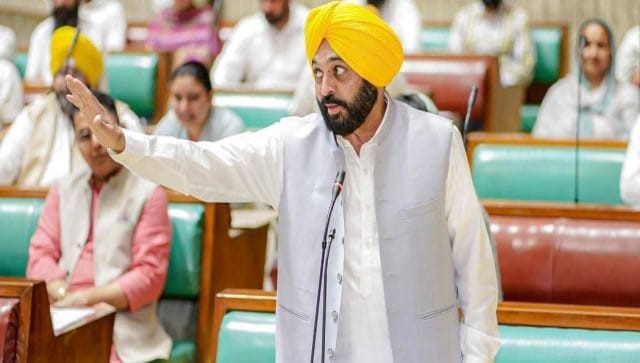
Punjab in ‘debt trap’ due to previous regimes: AAP govt’s White Paper

The Bhagwant Mann-led AAP government in Punjab, in a White Paper tabled in the Assembly, said on Saturday (June 25) that the state is in an “economic morass and debt trap”. It blamed the previous regimes for this.
According to the 73-page document presented by Finance Minister Harpal Singh Cheema, “Today, Punjab is in an economic morass and debt trap… The current debt indicators of the state are probably the worst in the country, pushing it deeper into a debt trap.”
Also read: Bhagwant Mann promises 25,000 govt jobs in Punjab in first decision
This comes days after a study on state finances by the Reserve Bank of India (RBI) said Punjab, Bihar, Kerala, Rajasthan and West Bengal are “highly stressed”. “Punjab, Rajasthan, Kerala, West Bengal, Bihar, Andhra Pradesh, Jharkhand, Madhya Pradesh, Uttar Pradesh and Haryana turn out to be the states with the highest debt burden.”
“Based on the debt-GSDP ratio in 2020-21, Punjab, Rajasthan, Kerala, West Bengal, Bihar, Andhra Pradesh, Jharkhand, Madhya Pradesh, Uttar Pradesh and Haryana turn out to be the states with the highest debt burden. These 10 states account for around half of the total expenditure by all state governments in India,” it said.
“Punjab is expected to remain in the worst position as its debt-GSDP ratio is projected to exceed 45% in 2026-27, with further deterioration in its fiscal position,” it added.
The document was tabled two days ahead of the presentation of the state budget in the House.
Also read: Kejriwal tells Punjab ministers to perform or be replaced, lauds CM Bhagwant Mann
“The previous governments, instead of applying necessary correctives, continued to slip into fiscal profligacy, as evident from unchecked increase in unproductive revenue expenditure, freebies and unmerited subsidies, virtual collapse in the capital and social sector investments vital for future growth and non-realisation of its potential tax and non-tax revenues,” it said.
“The White Paper on the state finances is an attempt to simplify the complex issues/problems being faced by the Punjab government in the field of finance, which has become grave over time due to imprudence of governments of the past,” said the document.
It said the current effective outstanding debt of Punjab stands at ₹2.63 lakh crore, which is 45.88% of the SGDP.
The previous government professed of bringing fiscal prudency in management of state finances while discreetly choosing not to discharge the pending liabilities of the state government, it said.
“Sadly, they have also followed their predecessors and while demitting office, handed over immediate and medium-term staggering liability of ₹24,351.29 crore that the new government has to discharge over the coming years,” the document stated.
Also read: Electricity theft: Punjab power corp imposes Rs 59.11 lakh fine against 92 consumers
In the last five years, the debt of the state has grown by 44.23% translating into a compounded growth rate of 7.60% per annum.
According to the document, the state is in a classical debt trap – a significant portion of the annual gross debt/borrowings contracted by the government is being applied towards repayment of the old debt and interest payments and not for the future development and prosperity of the state.
It pointed out that the outstanding debt of state has increased from ₹1,009 crore in 1980-81 to ₹83,099 crore in 2011-12 and further to ₹2,63,265 crore in 2021-22.
Also read: Pointing at Lanka-like economic crisis, RBI warns five states
Punjab, which used to be number one in per capita income across the country for a long time, it now lags behind many other states and has slid from the top to the 11th position, it said.
The 6th Punjab Pay Commission, which was otherwise due from January 2016 was implemented in July 2021, with quite a delay and in haste with just six months before the State Assembly elections, according to the White Paper.
“The previous government could not pay the arrears of revised pay with effect from January 1, 2016 to June 30, 2021 on account of implementation of 6th Punjab Pay Commission. The pending liability on this account alone is expected to be around ₹13,759 crore,” it said.
(With inputs from agencies)


